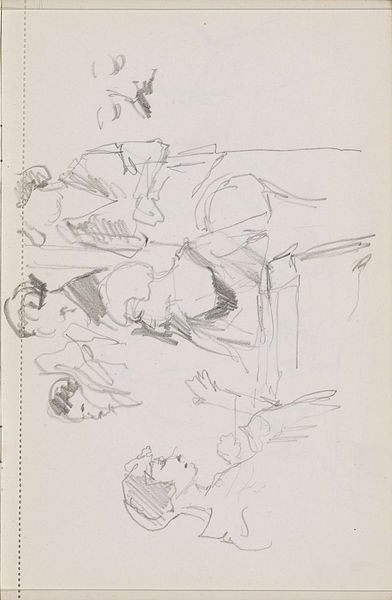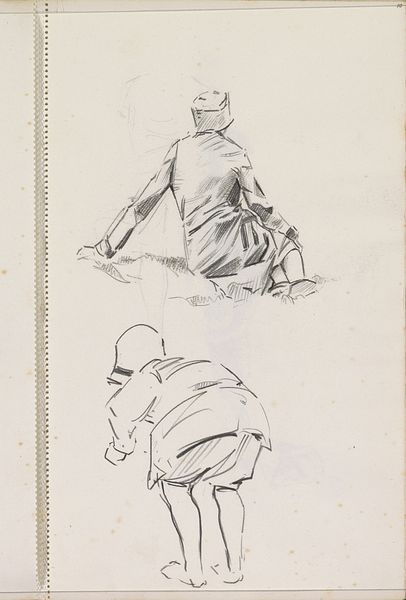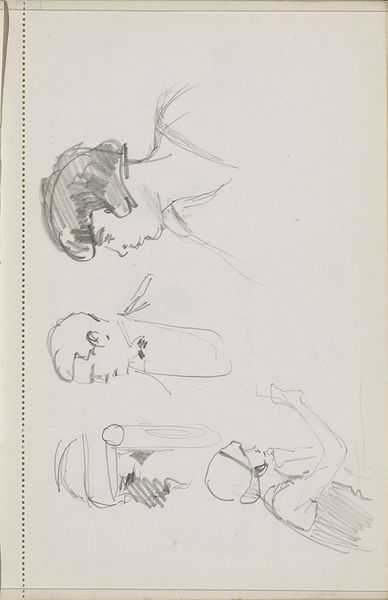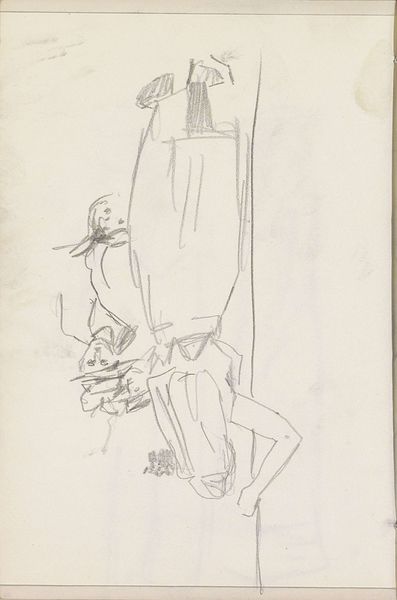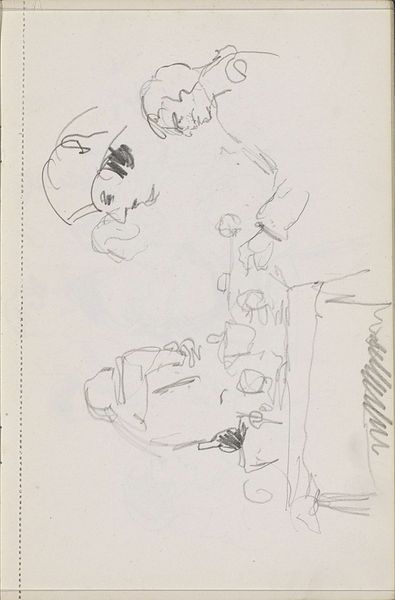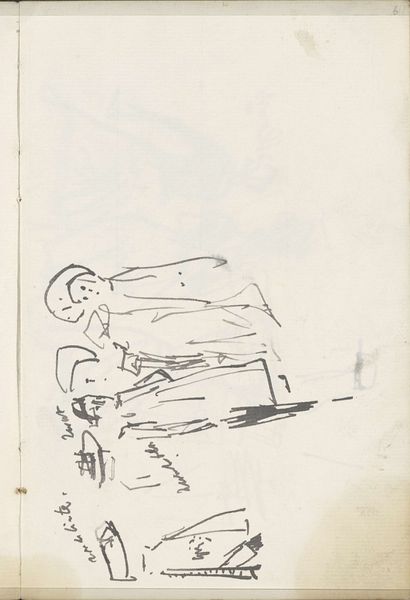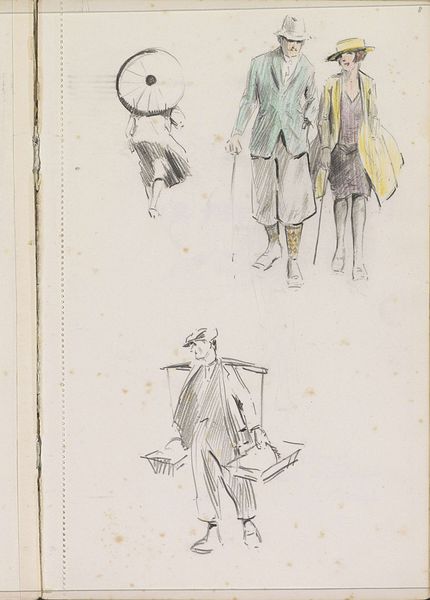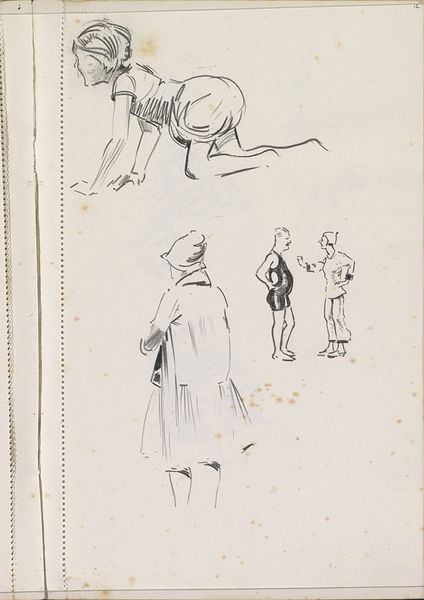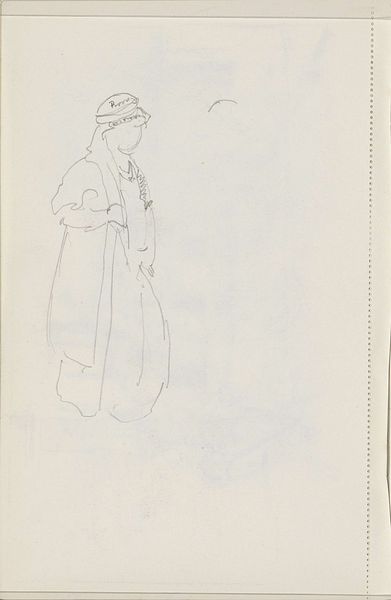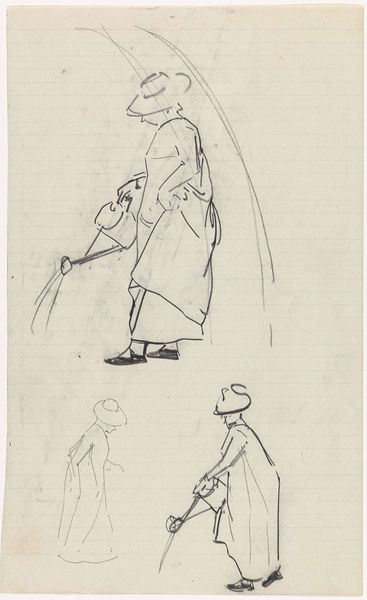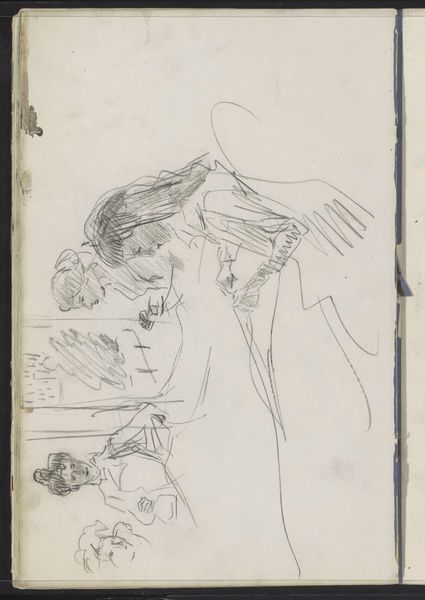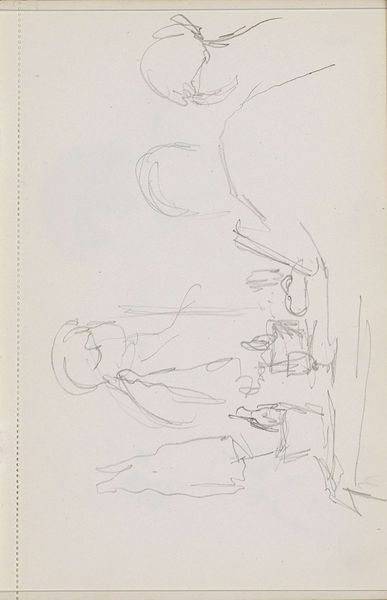
drawing, pencil
#
drawing
#
comic strip sketch
#
quirky sketch
#
figuration
#
personal sketchbook
#
idea generation sketch
#
sketchwork
#
ink drawing experimentation
#
pencil
#
sketchbook drawing
#
genre-painting
#
storyboard and sketchbook work
#
sketchbook art
#
realism
#
initial sketch
Copyright: Rijks Museum: Open Domain
Editor: So, here we have Otto Verhagen's "Liggende, staande, lopende en zittende figuren" from 1931. It seems to be a pencil and ink drawing, almost like a page torn from a sketchbook, showing different figures in various poses. The casualness makes me wonder about its purpose. What do you see in this work? Curator: Well, I see a reflection of everyday life finding its place on paper. Looking at this work, it's tempting to situate it within the larger context of the interwar period, a time of economic hardship and societal shifts. This period saw increased scrutiny of public spaces. The figures, seemingly captured candidly, almost read as documentation of public life, wouldn't you agree? Editor: I can see that. Like a snapshot of ordinary people going about their day. I guess I was so focused on the composition itself I missed the potential social commentary. How do you think displaying art like this affects our understanding of its history? Curator: That’s a great question. Pieces like these can demystify the artistic process. By showcasing "raw" or "unfinished" work, institutions grant a sort of democratic access to the artist's mind, positioning the creative journey as part of the art object. But that choice is also political. Are we elevating the everyman or potentially devaluing skill and refined technique through over-exposure? What do you make of that possibility? Editor: That's a perspective I hadn't considered. So museums aren't just showing us the art, they're shaping our perception of what art even *is*. I'll have to keep that in mind. Thanks! Curator: Exactly. Context is crucial. Reflecting on how artistic choices echo societal norms is part of responsible art appreciation. It enriches the viewing experience immeasurably.
Comments
No comments
Be the first to comment and join the conversation on the ultimate creative platform.
